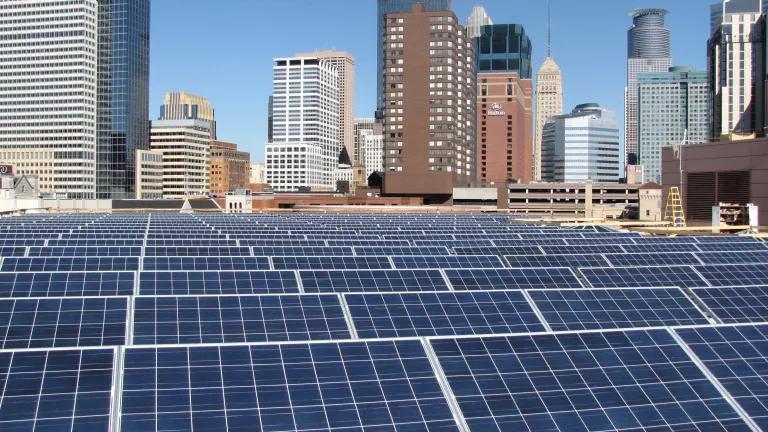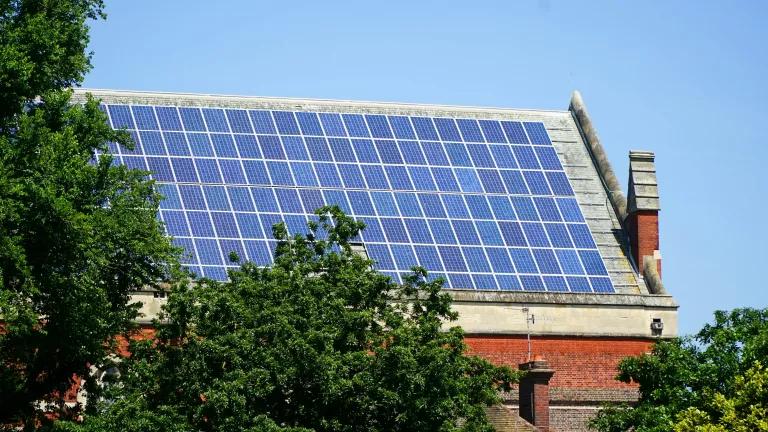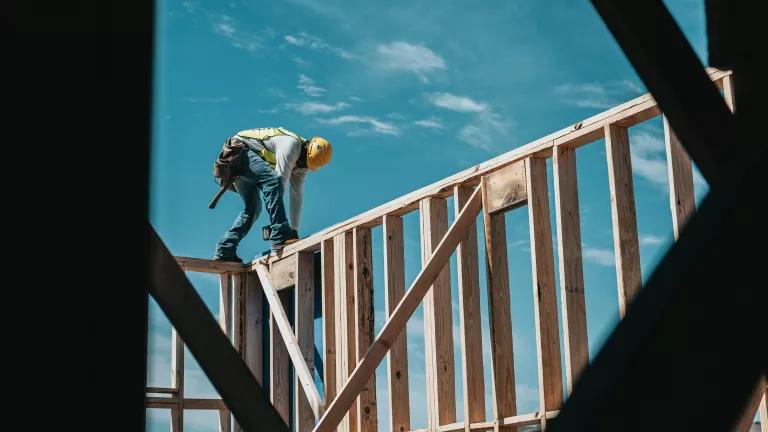Pollution-Free Buildings for Healthy Communities
Building equity: Decarbonizing our homes for the climate, affordability, and community well-being.

The facade of an apartment building in the Williamsburg neighborhood of Brooklyn, New York.
Daryan Shamkhali
The article first appeared in the Summer 2024 edition of The National Black Caucus of State Legislators (NBCSL) magazine.
We spend 90 percent of our time inside buildings—working, resting, taking care of loved ones, and so much more. This makes the quality of air we breathe inside our homes and other buildings just as, if not more, important than the quality of our outside air. Unfortunately, there is a hidden danger lurking in many of our buildings: noxious fossil fuels. Burning methane, aka “natural,” gas inside of our homes increases health risks, like asthma and respiratory illness, by releasing pollutants into our spaces. These are health impacts that disproportionately burden Black communities. State legislators across the country are taking action on behalf of their impacted constituents and becoming leaders in the movement toward efficient, all-electric buildings that are healthier, safer, and can be affordable to all.
Studies have found that in many cases indoor air has higher levels of harmful pollutants like fine particulate matter (PM2.5) and nitrogen dioxide (NO2) than would be considered healthy for outdoor air by the Environmental Protection Agency (EPA). Gas-burning appliances that are not properly vented release toxic pollutants like carbon monoxide, benzene, and formaldehyde into the home. Higher levels of nitrogen dioxide can increase the risks of asthma symptoms for children in the home, according to a peer-reviewed study published in the International Journal of Epidemiology. Our homes are meant to be places of relaxation and safety, not polluted with toxins that harm our families.
Indoor pollution disproportionately impacts some of the most vulnerable communities in our country. Buildings reflect long-standing inequities in housing quality directly connected to racist policies and practices, such as redlining and exclusionary zoning. Over time, these policies have led to Black communities experiencing higher levels of pollution, poorer housing conditions, and subsequently spending a greater share of their income to heat and cool their homes. Black homeowners also face barriers to financing options to make improvements to their homes such as purchasing efficient all electric heat pumps that would lower their energy bills. Black families living in rental proprieties have even less control over appliance installation and maintenance. Poor ventilation, older appliances, and smaller units in rental properties can lead to even higher amounts of hazardous indoor air pollution.
Energy efficiency retrofits and swapping out fossil-burning appliances with highly efficient all electric versions can help improve the quality of indoor air and save overburdened households money on their utility bills. This is called building decarbonization: increasing the efficiency of homes so they use as little energy as possible and installing electric heat pump water heaters and space heaters to ensure that what little energy is used isn’t polluting the home.
Thanks to the Inflation Reduction Act, significant federal funding is available to help states shift to clean, electric, and healthy buildings. Tax credits and rebates from the law will help offset the cost of efficiency and building upgrades like electric heat pumps and home energy audits. Nearly $9 billion in funds is to be administered directly through state energy offices. States must take advantage of this funding to prioritize it for historically underserved communities. Other funding, like the $2 billion US EPA grant funding the Power Forward Communities project of which the National Black Caucus of State Legislators is a partner, has already been awarded and is ready to be deployed.
State legislatures across the country are maximizing the beneficial impact from this opportunity by pairing the new funding with standards for reducing pollution from combustion of fossil fuels inside homes and other buildings. In Illinois, the Clean and Healthy Buildings Act was filed in the Spring of 2024. This bold bill will help plan for an equitable transition away from the dirty gas system, help resident make their homes more efficient which will lower energy bills, and directly help support communities of low incomes access new efficient electric equipment. This bill is modeled after successful laws in Colorado and Vermont, where the methane gas industry and other fossil heat providers are already leveraging Federal funds to help meet their indoor pollution obligations.
The building sector is responsible for more than 30 percent of the U.S. greenhouse gas emissions driving the climate crisis. We cannot reach our climate goals without addressing our buildings. On the flip side, tackling indoor air pollution by investing in our building stock is a once in a generation opportunity to invest in Black community infrastructure, improve health outcomes, and take action against climate change. Now is the time to act.



